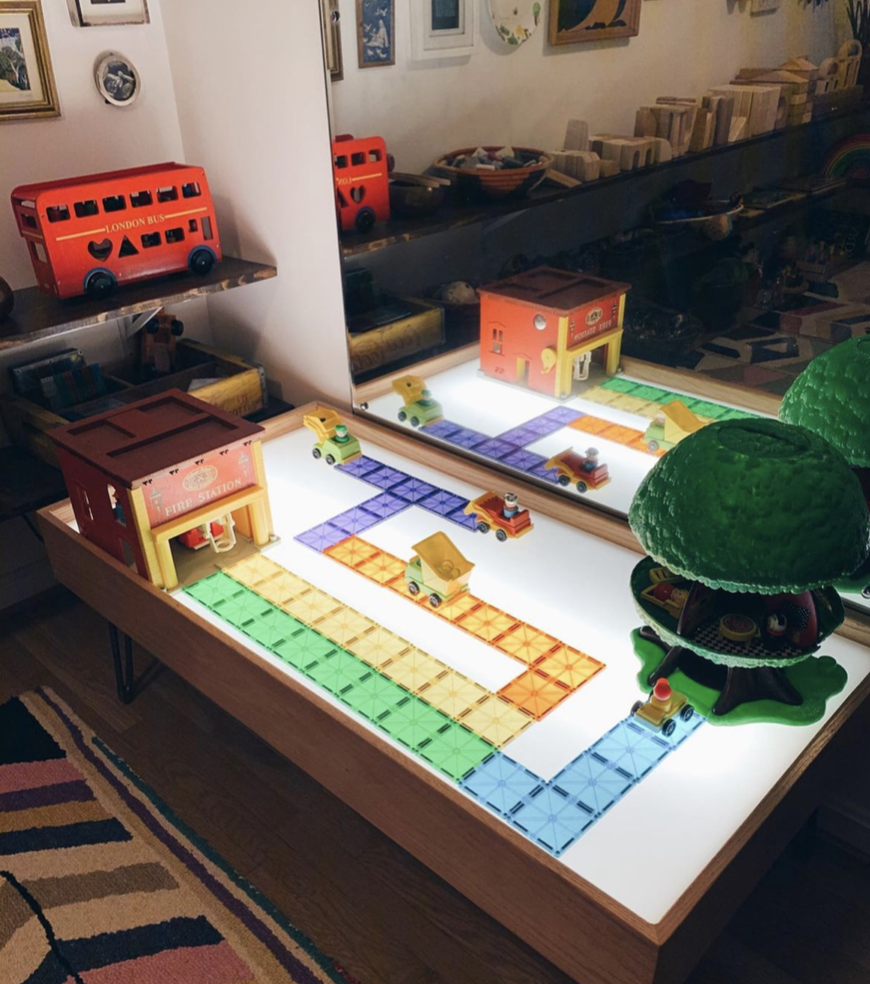There is giving a child a toy. And then there is creating invitations for a child to play.
Play invitations are a concept that comes from the Reggio Emilia approach to early childhood learning. The Reggio philosophy, called “invitation to play,” encourages children to learn through exploration, and that’s exactly what’s going on when your children are invited to play in a creative, non-directive way. There are no benchmarks for success other than enjoyment.
In modern lingo, you may hear your child’s teacher talk about play invitations. This concept is exactly what they’re talking about.
What is a play invitation?
As adults, we often talk about surrounding ourselves with items that spark joy. In the world of play invitations, we’re looking for things that spark interest.
A play invitation is when a caregiver arranges toys in a way that is meant to spark a child’s interest and will give them more enthusiasm and interest in play.
This is put into practice by setting up little scenes with a few simple toys or materials. It doesn’t have to be fancy or elaborate—imagination is part of the play!
“Giving children the opportunity to create play on their own terms—with no right or wrong way to move forward—is such an amazing way to foster independence,” Rachel Duda, Vivvi’s VP of Education, said. “Caregivers set the scene with how they arrange the play invitation, but children take the lead in deciding where the story goes.”
Setting the scene
For younger toddlers, you’ll want to start out with just two or three materials in your play invitation. You’ll also want to make sure the materials are age-appropriate.
As your child grows, you may add additional items to their scenes.
Examples of simple play invitations:
- Peg people + magnetic tiles
- Stacking cups + rocks
- Animal figures + sticks
- Magnetic tiles + toy cars
- Sticks, rocks + animal figures
- Magnetic tiles, felt squares + rocks
- Felt squares, Peg people + sticks
- Paper, magnetic tiles + crayons
How play invitations inspire learning
When a child initiates play on their own because they saw something that sparked their interest, they’re building on their cognitive abilities—encouraging new ideas and expanding their ability to explore.
Allowing your child the opportunity to play with things that inspire them gives them first-hand control over their own learning. Do they choose blocks for building today? Great, that’s math and balance and spatial awareness. Maybe they choose soft stuffies and blankets. Amazing, today is a day to build empathy and display care.
When children are given the opportunity to make their own choices, learning becomes fun.
Your turn to watch and learn
The most important thing you can do while your child explores their invitation to play is to watch and learn. Observe their decision making, their problem solving, their ability to tell little stories.
Embrace this special time together as a bonding opportunity.
“This type of play really lends itself to strong bonding time with your little one,” Duda said. “Play invitations are a great way to learn more about your child, because you get to watch in real time as they explore their interests and learn what type of play they enjoy.”
How play invitations encourage independence
Play invitations are a great way to encourage independence from the youngest age, and eventually may earn you an extra bit of shut eye on weekend mornings!
Mandy Sheffer, mother of three and play space designer, has been using play invitations for years with her own children, and now helps other parents create spaces that inspire play.
Her pro tip for parents of children who are old enough to get out of bed on their own in the morning: before you slink into bed on Friday night, set up an invitation for the morning!
*Remember, young children should never be left alone with any toys that could be hazardous for their developmental stage.
Here are three of Sheffer’s ideas for play invitations you can set up, organized by age:
- Cars on the road
Ages 2+
What you need: Magnetic tiles + toy cars
How to Set it up: Build a few roads with your magnetic tiles and place the toy cars on top, so your child can see your vision. If you have a few houses to include, you can build a small town, as pictured below.

2. Invitation to draw
Ages 3+
What you need: Paper, colored pencils + drawing book
How to set it up: Stage a desk, table, or drawing area with all the supplies your child will need: paper, drawing instruments like colored pencils or markers, and a drawing book. You can use Post-It’s or paper clips to mark the page you’re challenging your child to draw.


3. Jungle LEGOs
Ages 2+
What you need: LEGOs + house plants
How to set it up: In this play invitation, Mandy has scooted all of her large house plants together and added LEGOs! This is a great way to use the tools already in your home (plants!) to encourage fun, imaginative play in your little ones. Place LEGO characters or blocks in the base of your greenery, giving your child lush, jungle vibes to explore.

Vivvi provides child care and early learning for children ages 0-5, with unrivaled flexibility that works for today’s families. Our inquiry-based curriculum is facilitated by warm, experienced teachers in bright, open spaces that let children make big connections to the growing world around them. Find your nearest Vivvi here.